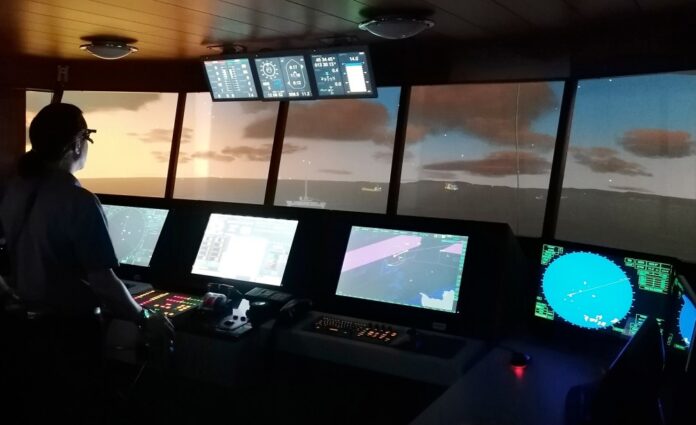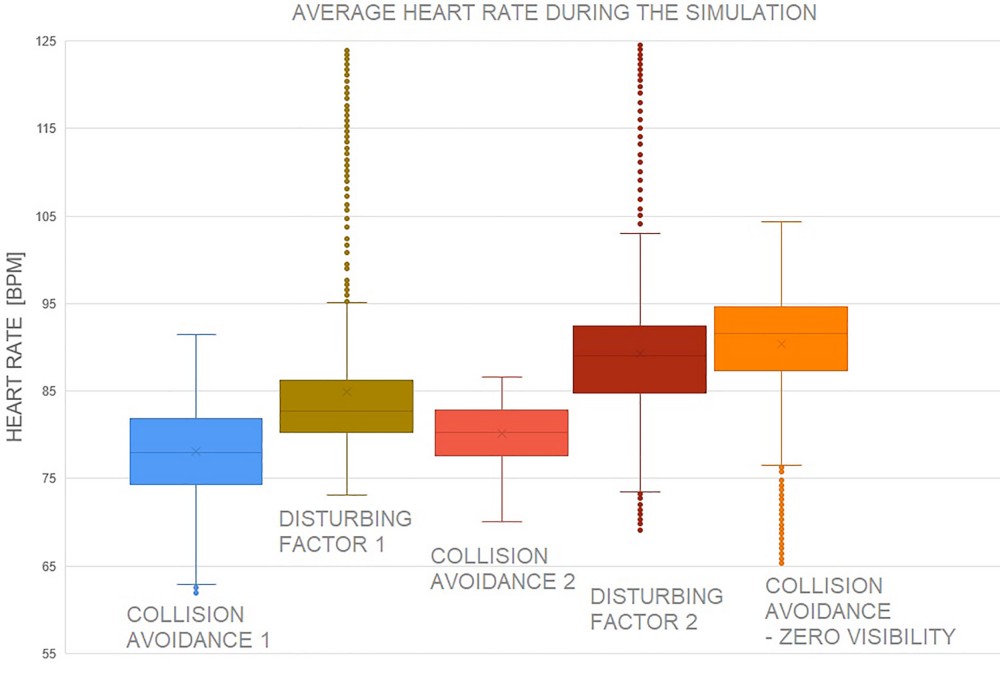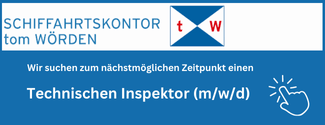
Biometric parameters recorded in a full-mission bridge simulator during collision avoidance training is being researched to provide information on the level of cognitive load of officers on watch, working memory saturation, and fatigue that affect performance[ds_preview]
The officer on watch (OOW) is (still) responsible for making the final decisions and continues to bear the responsibility for the safety of navigation. As an EMSA analyses of maritime accidents show, human error is a contributing factor in the majority of cases with serious consequences, mainly due to a high workload, so that the biometric records of the officers on watch could be used to indirectly monitor the state of arousal through situational awareness. Theoretically, the change in heart rate (HR) indirectly indicates the state of cognitive load and thus the ability of the decision-making process in the person’s working memory to successfully avoid the potentially dangerous situation. During the simulation, the high workload of the participants is caused by challenging navigation conditions (e.g., weather, traffic) or various disturbing factors, (e.g. fire in the engine room, etc.) that may lead to human error behaviour and eventually, in the worst case, a collision.
For this reason, the experiment was designed in which five experienced captains, with a 20,5 years of service on average, volunteered to participate in the case study to measure HR during maritime training. The experimental design consisted of two navigation phases, the control phase (easy) and the experimental phase (hard). The primary biometric sensor was the Empatica E4 multisensor wristband with EDA (electro-dermal activity), BVP (blood-volume pulse), accelerometer, and temperature sensor. The focus of the ad hoc questionnaire (pre-experiment) was on the participants’ prior experience and abilities, their personality, and their reaction to the ergonomics and environmental parameters of the simulator.
The experiment
The efficiency of cognitive processes in human working memory during training depends on the number of tasks set and correlates with the participants’ prior experience. During navigation training in a simulator, the difficulty of the task depends on the traffic density in the separation zone (Figure 1). In addition, there is the disturbing factor (sound of fire alarm), which causes a typical biometric reaction and thus a prolonged reaction time due to the saturation of the cognitive part of the participant’s working memory. During simulator training, the saturation of working memory impairs the learning process and situational awareness, which may eventually lead to a potentially dangerous situation.

The BVP sensor indicates that the more the blood vessels dilate (vasodilation), the greater the signal amplitude, indirectly indicating a higher cognitive process during simulator training. During the cognitively demanding experimental phase, the HR was significantly higher than during the control phase. The highest BVP values were measured (as expected) during the interval in which the disturbance factor occurred. A typical biometric response during the fire-alarm phase showed that experienced participants typically sought the position of the mute switch. When they recognized the severity of the alarm, BVP increased.
Discussion
During the simulated digital training process, the biometric measurement results confirmed the working hypotheses known from the existing literature that the average HR increases significantly during the cognitively demanding phase of the experiment. The sample of participants is small (N=5) due to the current health situation, therefore conclusions are limited. Nevertheless, the novelty of the non-invasive measurement design confirms the potential of biometrically assisted digital training.
The trend of the collected data from the proposed experimental design shows the individual parameters and personalities of the participants. From the literature review, we hypothesize that the biometric response is related to the participant’s personality, openness, conscientiousness, extraversion, agreeableness, and neuroticism. However, individual analysis of the biometric records shows that participants differ in the extent of their responses. It appears that the differences are related to the participants’ individual experience of reality, including the post-traumatic stress response that occurred when the participants were confronted with the situation, similar to their own previous experience on the real ship, e.g. experience of a real fire on board.
The interesting observation in simulated digital training correlates with recent findings on the cognitive processes of human working memory when we view it through the prism of bridge ergonomics and environmental design. In the zero-visibility task, participants were confronted with dense fog during simulated navigation, where they had to rely solely on the bridge instruments for navigation. The processed data show an even higher HR than in the disturbing factor task, indicating the high cognitive load. This result supports the assumption that more digital devices on board do not necessarily mean more safety.
Conclusions and the next step
Despite the fact that the conclusions of this case study are limited due to the small sample of participants and the current health situation, the result of the proposed model gives an insight into the cognitive processes of the participants during digital training in the full-mission simulator. The induced disturbance factor significantly affects the HR, suggesting that the cognitive process in working memory is saturated during the specific task, possibly leading to erroneous actions by humans. The zero-visibility task disrupted participants’ HR even more than the fire alarm, suggesting that a greater number of instruments on the ship’s bridge does not necessarily mean higher safety of the navigation. We also expect to better understand the influence of the participant’s personality on the decision-making task during digital training. The next step is to develop the machine learning algorithm for real-time data processing where the goal is monitoring the OOWs’ attention.
Authors: Dejan Žagar, Franc Dimc, University of Ljubljana, Department of Maritime and Transport Systems
















